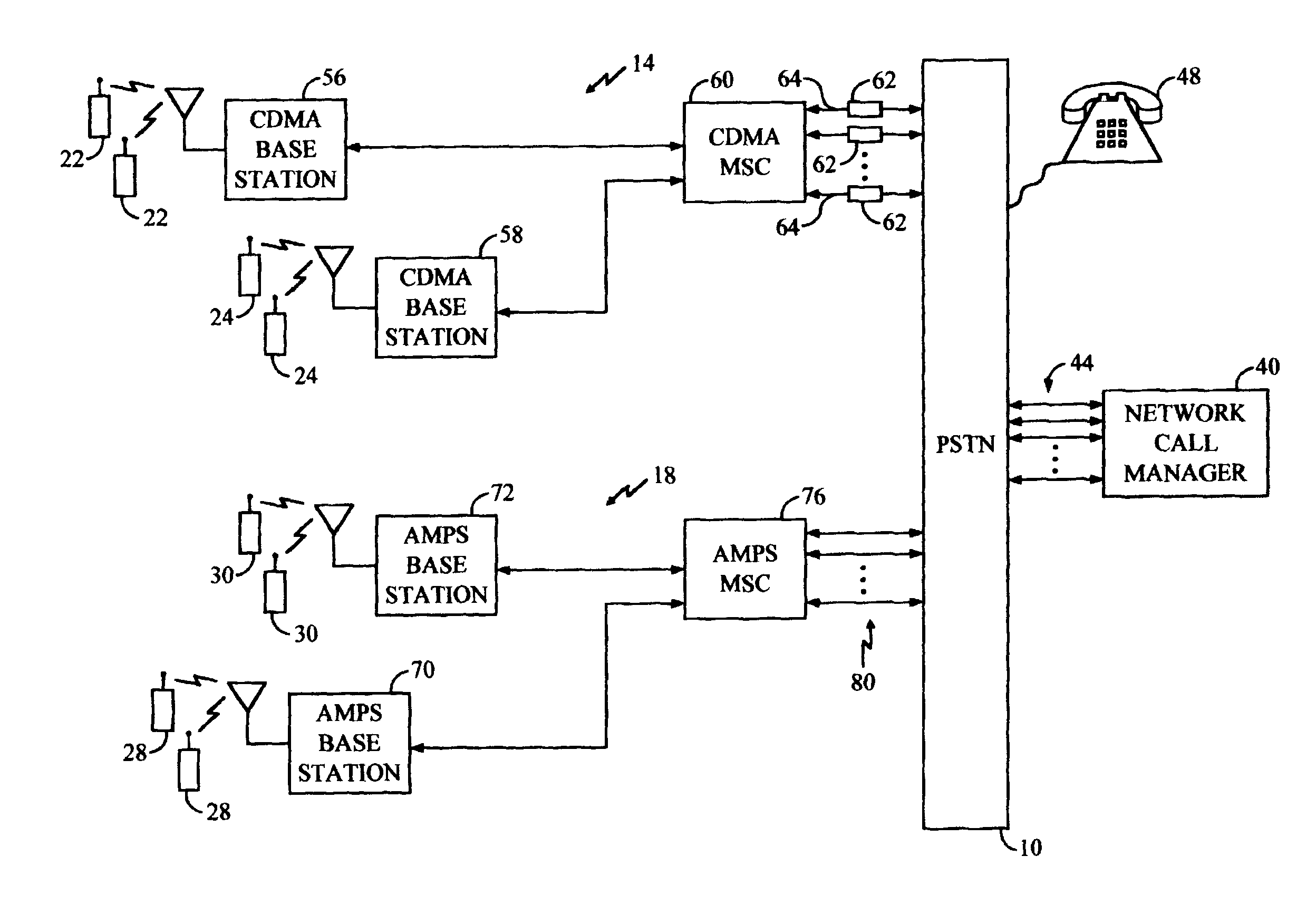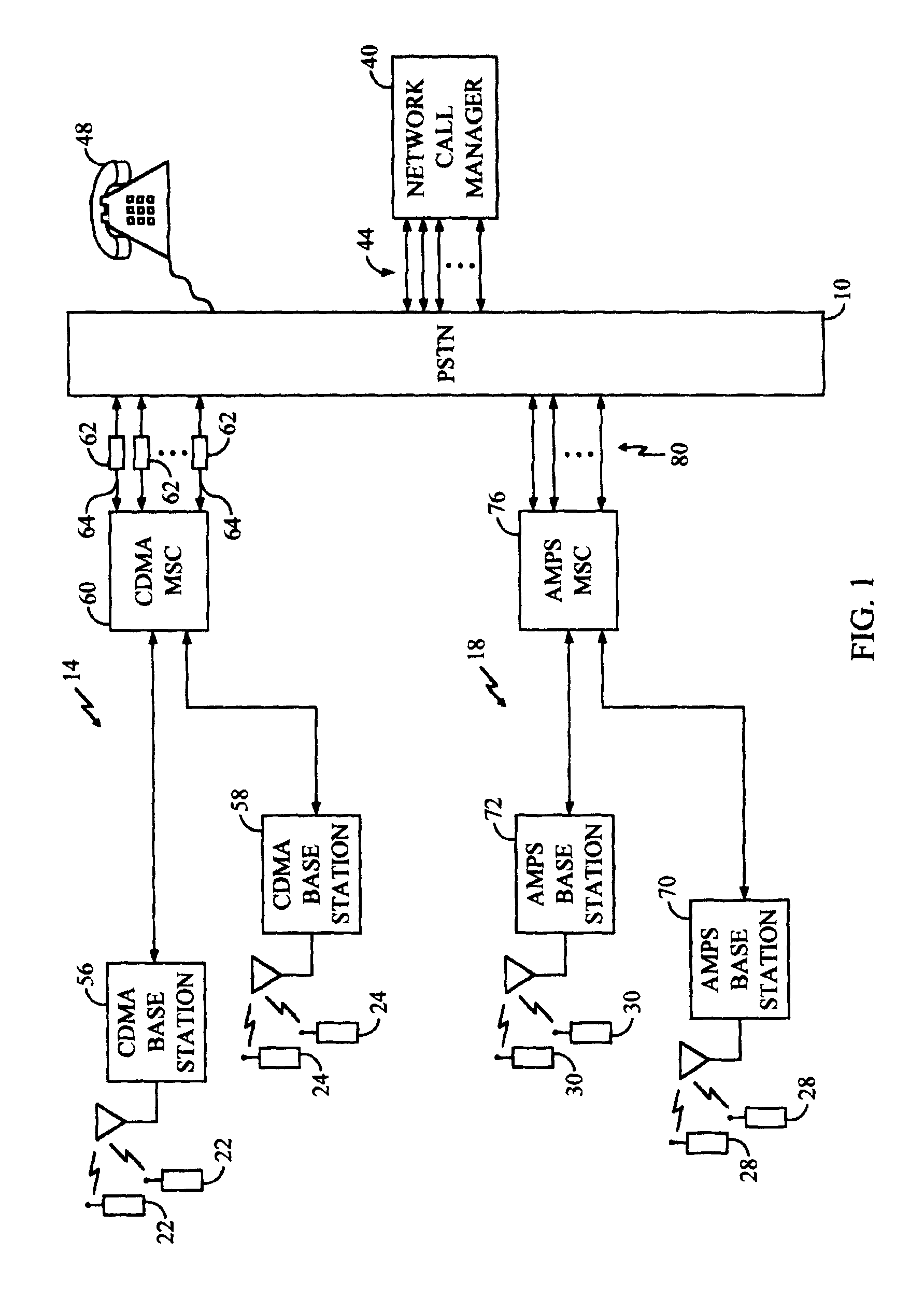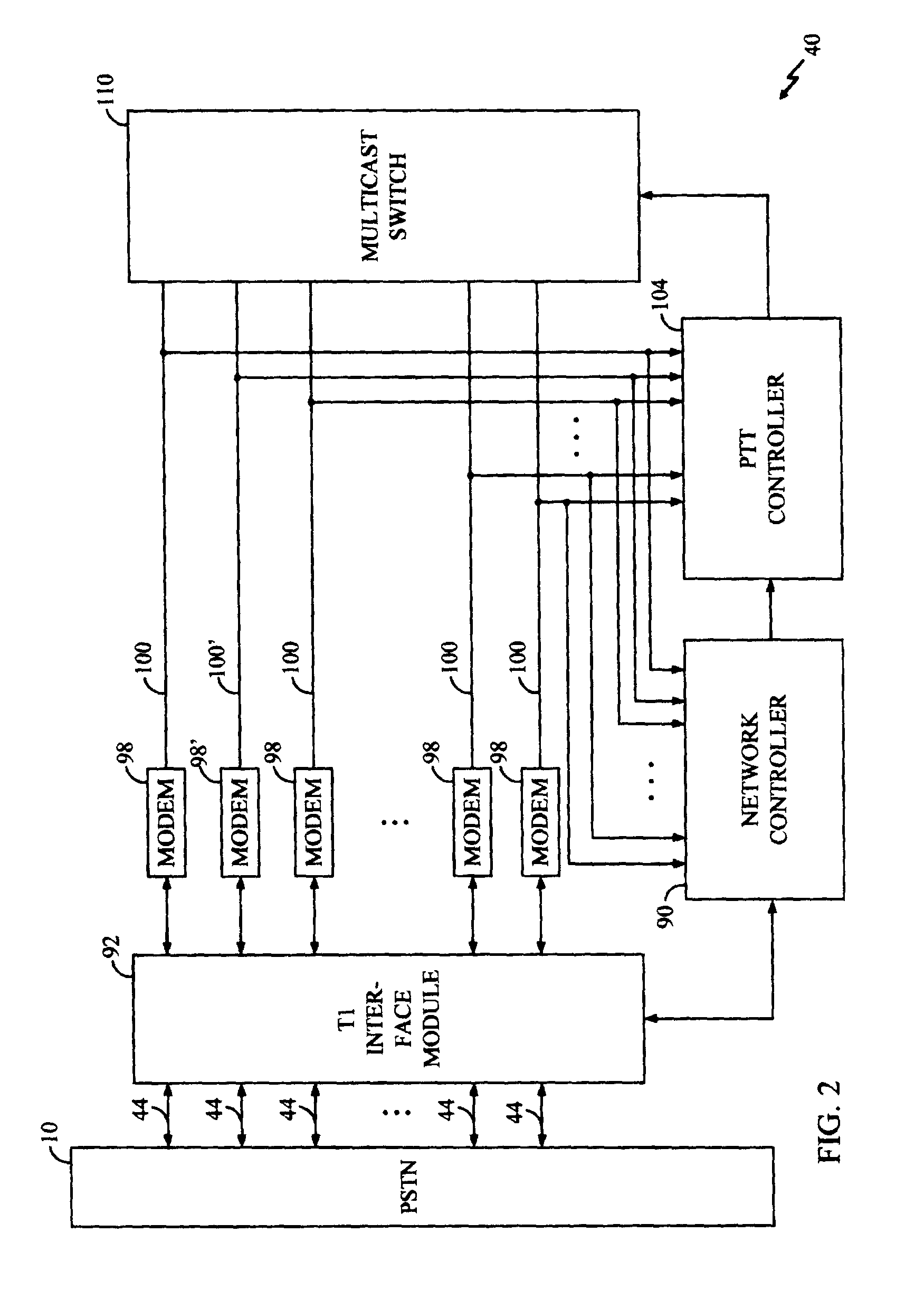Method and apparatus for providing a private communication system in a public switched telephone network
a private communication and public switched telephone technology, applied in the field of multi-party communication systems, can solve the problems of limiting the number of radiotelephone conversations within an entire metropolitan area to the number of channels available, inability to use cellular systems, and limiting the extent to which the set of member users may be geographically dispersed, so as to enhance the security of the ptt private network
- Summary
- Abstract
- Description
- Claims
- Application Information
AI Technical Summary
Benefits of technology
Problems solved by technology
Method used
Image
Examples
Embodiment Construction
I. Structure of PTT Private Network
[0027]FIG. 1 illustratively represents the elements of an exemplary telephone system within which may be established a PTT point-to-multipoint private communication network (“PTT private network”) of the present invention. Referring to FIG. 1, the exemplary telephone system includes a public switched telephone network (PSTN) 10, a CDMA cellular communication system 14 and an analog (AMPS) cellular communication system 18. The CDMA system 14 provides service to CDMA-compatible mobile radiotelephones (“CDMA mobiles”) 22 and 24, while the AMPS system 18 facilitates communication with users of AMPS-compatible mobile radiotelephones (“AMPS mobiles”) 28 and 30. A network call manager 40, connected through a plurality of T1 channels 44 to the PSTN 10, operates as described hereinafter to create a private communication network among a corresponding plurality of member users within the exemplary telephone system of FIG. 1.
[0028]The private communication net...
PUM
 Login to View More
Login to View More Abstract
Description
Claims
Application Information
 Login to View More
Login to View More - R&D
- Intellectual Property
- Life Sciences
- Materials
- Tech Scout
- Unparalleled Data Quality
- Higher Quality Content
- 60% Fewer Hallucinations
Browse by: Latest US Patents, China's latest patents, Technical Efficacy Thesaurus, Application Domain, Technology Topic, Popular Technical Reports.
© 2025 PatSnap. All rights reserved.Legal|Privacy policy|Modern Slavery Act Transparency Statement|Sitemap|About US| Contact US: help@patsnap.com



